How to focus Leica geovid HD-B Binoculars display?
- DDr. Michael ThomasAug 13, 2025
If the display on your Leica Binoculars is not focused, the diopter compensation may not be precise. Repeat the diopter compensation process to correct this.
How to focus Leica geovid HD-B Binoculars display?
If the display on your Leica Binoculars is not focused, the diopter compensation may not be precise. Repeat the diopter compensation process to correct this.
Why Leica geovid HD-B Binoculars don't show a focused display?
If the display on your Leica Binoculars is not focused, it might be due to imprecise diopter compensation. You should repeat the diopter compensation to correct this.
What to do if my Leica Binoculars display is flashing or no measurement is possible?
If the display is flashing or no measurement is possible on your Leica Binoculars, the cause may be the battery. Replace the battery to resolve this issue.
Why does the display "- - -" appear when measuring the range with my Leica Binoculars?
The "- - -" display when measuring range on your Leica Binoculars can appear due to several reasons: * The object may be outside the measuring range. * The object might not be reflective enough. * Poor ambient conditions, such as visibility issues, can also cause this.
How to fix the "Err" display on my Leica Binoculars?
The "Err" display on your Leica Binoculars indicates an error involving the memory card. Check if the memory card is working correctly and if the data saved on it is OK.
Why is the image not circular when viewing through Leica geovid HD-B Binoculars?
If you're not getting a circular image through your Leica Binoculars, it could be due to: * Your pupils not being correctly aligned with the eyepiece exit pupil. Try adjusting your eye position. * The eyepiece cup position is not correctly adjusted for use with or without glasses. If you wear glasses, twist the eyepiece cups. If you don't wear glasses, ensure they are flipped up.
What to do if Leica geovid HD-B Binoculars display flashing or no measurement possible?
If your Leica Binoculars display is flashing, or you cannot get a measurement, the cause might be a depleted battery. Replace the battery to resolve this issue.
How to get a circular image when viewing with Leica geovid HD-B?
If you're not getting a circular image when viewing through your Leica Binoculars, it could be due to: * Incorrect eye position: Adjust your eye position to align properly with the eyepiece exit pupil. * Eyepiece cup adjustment: Adjust the eyepiece cups to the correct position. If you wear glasses, twist the eyepiece cups. If you don't wear glasses, ensure they are flipped up.
Identifies primary parts like eyepieces, dials, buttons, and compartments.
Lists all items provided in the binocular package.
Safety warning about not looking at bright light sources to prevent eye injury.
Describes Leica's reputation for quality, precision, and reliability.
Explains the core functionality of the binoculars, including rangefinding.
Advises the user to read the manual for optimal use of the device's features.
Instructs on proper disposal methods for electronic waste, emphasizing recycling.
Provides guidance on the separate disposal of batteries found within the device.
Directs users to sources for more information on waste disposal.
Describes the rugged, waterproof, and fog-proof design of the binoculars.
Explains how to attach the lens covers to the binocular tubes.
Provides specific instruction for attaching the eyepiece cover to the carrying strap.
Step-by-step guide for inserting and changing the battery.
Advice on cold weather, storage, and battery performance.
Safety and environmental guidelines for battery handling and disposal.
States the expected battery life under specific conditions.
Explains factors affecting battery life, including temperature and usage.
Describes how to identify a low battery and its implications.
Suggests using batteries from reputable brands.
Details the adjustability and removability of the eyepiece cups for use with/without glasses.
Describes how to adjust the binoculars for proper eye spacing to achieve a unified view.
Step-by-step guide for focusing and setting diopter compensation.
Provides a tip for focusing one eye at a time for improved clarity.
Outlines menu structure, navigation, and core options.
Step-by-step guide for selecting and saving the preferred unit system.
Instructions on how to activate and perform a range measurement.
Explains the displayed values and limitations during measurement.
Details how to activate and use the continuous measurement scan mode.
Highlights power consumption and ALC display behavior in scan mode.
Details the device's measuring range and accuracy capabilities.
Lists environmental and target factors influencing measurement accuracy.
Advises on techniques for accurately measuring distant targets.
Explains how to view inclination, temperature, and pressure.
Notes the time required for the internal sensor to stabilize.
Guides on choosing the correct ballistics curve from tables based on ammunition.
Advises practical trials for accurate ballistic data, especially at longer ranges.
Step-by-step instructions for selecting and setting a ballistics curve.
Step-by-step instructions for setting the zeroing distance.
Lists the selectable options for zeroing distances in meters and yards.
Explains how to quickly display current ballistics curve and zeroing distance.
Explains the ALC feature and its output options like EHR and POA.
Lists factors considered in ALC calculations, including range and environment.
Mentions calculation basis and safety limits for ALC output values.
Warns about increased variability and the reference nature of values at longer ranges.
Emphasizes user responsibility for situational assessment in hunting.
Explains the concept of EHR and its necessity for varying ballistic conditions.
Notes potential differences in EHR due to environmental factors.
Defines Point of Aim as compensation for bullet flight and its hunting utility.
Explains how POA values are displayed and provides a practical example.
Explains how reticule adjustment compensates for impact variations.
Allows specification of click adjustment units: MOA or cm.
Step-by-step instructions for selecting ballistic output formats.
Lists the various ballistic output formats and click adjustment units available.
Explains how to display current ballistics curve, zeroing distance, and output value.
Explains using custom curves via memory card, involving calculation and transfer.
Details where to find instructions for custom curve calculation and transfer online.
Step-by-step guide for inserting and removing the memory card.
Explains how to access ballistics curves stored on the memory card.
Lists and explains potential warning messages related to memory card errors.
Advises checking settings even when using custom curves from a memory card.
Notes the limitation of saving only one ballistics curve per card.
Mentions the reduced range limit when using custom curves from a memory card.
Recommends specific microSD card brands for compatibility and reliability.
Warns about potential compatibility issues with non-standard microSD cards.
Provides general cleaning instructions for the binoculars and lenses.
Important notes on lens cleaning and avoiding damage from pressure or chemicals.
Advises noting the serial number for security and documentation purposes.
A critical warning against opening the device housing for any reason.
Instructs users on how to contact Customer Service for spare parts.
Addresses issues with circular image viewing and unfocused displays.
Covers measurement failures, error messages, and related causes.
Details optical parameters and performance metrics like range and accuracy.
Covers operating temperature, water tightness, laser specs, and dimensions.
Information on seminars, technical support, and contact details.
Details on obtaining servicing, repair, and customer care.
States compliance with FCC rules and laser safety standards.
Lists the responsible party and support contact information for US compliance.
| Magnification | 10x |
|---|---|
| Objective Lens Diameter | 42 mm |
| Rangefinder | Yes |
| Ballistic System | Yes |
| Exit Pupil | 4.2 mm |
| Twilight Factor | 20.5 |
| Diopter Compensation | ±4 dpt |
| Waterproof | Yes |
| Housing | Magnesium |
| Close Focus Distance | 5 m |
| Fogproof | Yes |
| Weight | 8x42: 980g; 10x42: 980g; 8x56: 1150g; 10x56: 1150g |
| Rangefinder Range | 10 m |
| Close Focusing Distance | 5 m |
| Laser | Class 1 |
| Display | LED |
| Battery | 1 x 3V / CR2 |
| Lens Coating | AquaDura |
| Battery Life | Approx. 2000 measurements |
| Eye Relief | 8x42: 16mm; 10x42: 16mm; 8x56: 18mm; 10x56: 18mm |
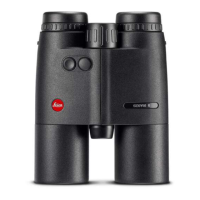
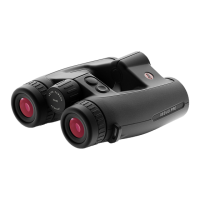
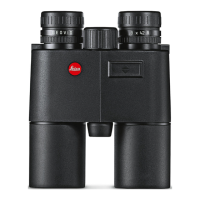

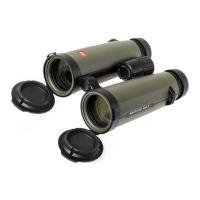
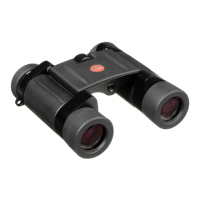
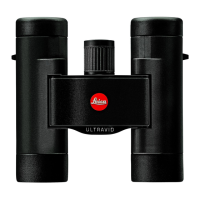

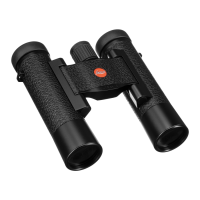


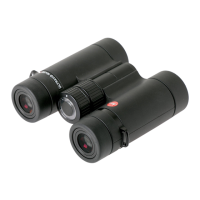
